Nowadays, most children are heavily exposed to screens before the age of three and spend overwhelming amounts of time indoors rather than creating outdoor memories to last a lifetime.
People who grew up without the ubiquitous presence of screens are likely to recall one of childhood’s most nostalgic inventions – the treehouse. For parents who want to enrich their children’s upbringing and combat the negative social and physical effects of excessive screen time, installing a treehouse in your backyard may be the key.
If you’re thinking about adding a treehouse to your landscape design, strategy is key to ensure both safety and sustainability. Here are a few things you need to consider when choosing the right tree for your treehouse.
What is the Right Tree for a Treehouse?
Location
Everyone knows the first rule of real estate: location, location, location. The same is true for choosing the perfect tree for your treehouse.
It is important to consider your specific needs when deciding where to build a treehouse. For a family of younger children, a treehouse close to your home may ensure that your kids do not stray too far on their adventures and remain in your line of sight. Be sure, however, not to locate the treehouse so close to your home that it presents a potential safety risk or disrupts the rest of your landscape design.
If your children are older and can handle a grander excursion, you may be able to build your treehouse on a tree further back on your property, allowing your children to embrace a little independence and grow their developing imagination.
Age
Once you have determined the ideal location for your treehouse, consider the age of the trees in that area.
Safety is a top priority when building your treehouse and tist can be directly influenced by the age of the tree you choose. Older, weaker trees should be avoided when selecting a tree for a treehouse, but even young trees should be approached with caution.
Trees are (obviously) plants, so they continue to grow over time. When building around a tree that may continue to grow significantly, be sure that you have built your structure in such a way that allows for growth as you exercise regular tree care. The last thing you want is for a treehouse to burst at the seams after a few years’ growth.
Supports
There are a number of different factors to consider when ensuring that your tree will offer sufficient support for your treehouse.
The first option is to choose not one, but two trees between which to build your treehouse. If there are multiple trees near enough to each other, building across two trees may allow you to build a larger treehouse with double the support.
Regardless of whether or not you have the capability of building on two trees, the thickness and disbursement of the branches will be important for ensuring stability. Be sure the branches are sturdy and convenient enough for building a treehouse. Removing extraneous branches can be done easily with proper landscape maintenance, but it’s a much more difficult task to grow the right branches.
Height
The internet is full of opulent photos of treehouses tucked away in the highest reaches of Amazonian canopies. While a sky-high treehouse may make for a scintillating Instagram post, treehouses placed far off the ground may not be the best idea.
Especially with younger, more rambunctious children, treehouses placed in a tall tree may increase the risk of injury in the event of a fall. Generally, it is advised that treehouses for children should be about 10 feet from the ground.
Height can also be a risk factor when combined with risk factors from weather. When a treehouse’s center of gravity is higher from the ground, storms can present unforeseen danger. When subjected to high-speed winds, treehouse can act as a sail and multiply the stress put onto branches during a storm. Ideally, a well-built treehouse will be able to endure the weather typical of your area, but keeping a tree house low to the ground may be a simple step to ensuring stability.
Treehouses are a classic feature of landscape design that are often forgotten today. In an age when kids need time outside more than ever, incorporating a treehouse may be what helps to combat “tech-brain” and encourage imagination in ways that only outdoor play can.
From tree planting to treehouse installation, The Parke Company is available and qualified to ensure that your treehouse is safe and artistically incorporated into your current landscape.
For more information on how to safely incorporate the whimsical delight of a treehouse into your landscape design, contact the certified arborists at The Parke Company and let their superior lawn services transform your property.
Give us a call (615-350-6033) or contact us online today to see how The Parke Company difference can work for you.
